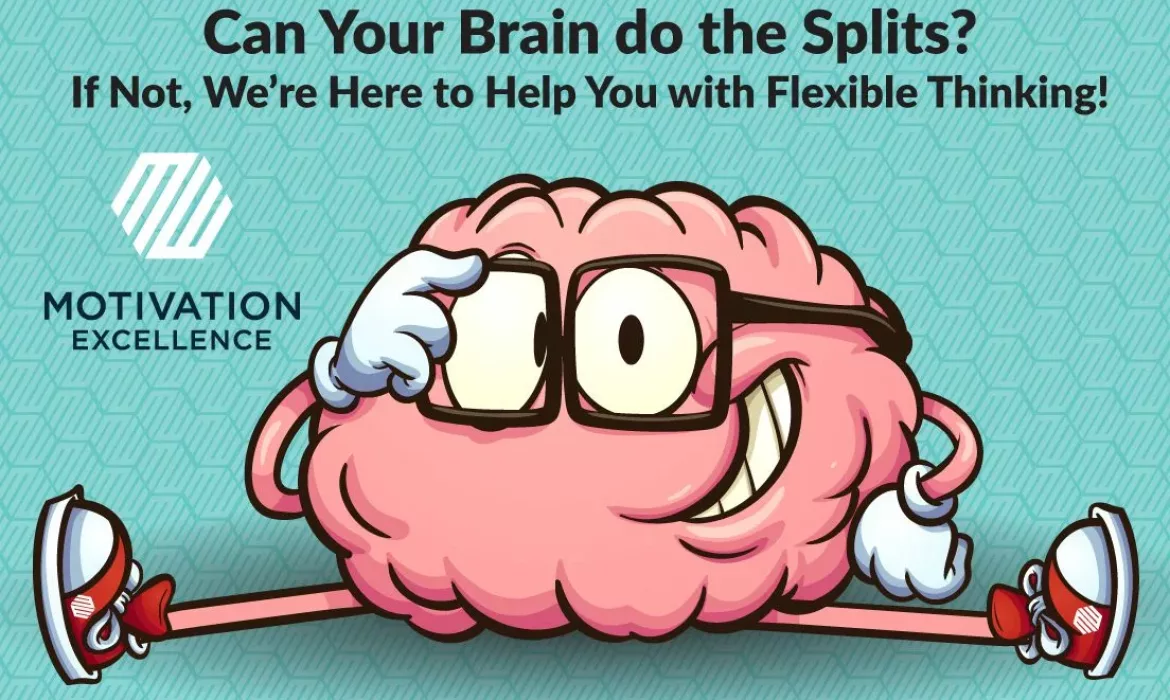
We all know nurturing flexibility is great for our bodies: it reduces injuries, improves posture and increases mobility. There are multitudes of exercise programs that focus on improving body flexibility as part of overall health and wellness. Maybe you practice yoga or make sure you stretch your legs and back well before and after a run? How often do you stretch your mind though?
According to Dr. Daniel Amen, just like there are maladies associated with being physically stiff, there are mental problems associated with inflexible thinking. Anxiety and OCD are two disorders linked to people unable to change their thought patterns. Road rage is also a symptom of inflexible tendencies! And, we all know at least one person in our life who is all about saying no rather than trying to go with the flow.
In our last 16 months of blogs, having the ability to adapt was positively linked to at least seven of our personal and professional development topics:
If any of the above are important to you, keep reading to learn more about how you can increase your ability to change without too much resistance coming from inside your own head.
Flexibility = Ability x Agility
Pre-pandemic your brain flexibility skills were surely tested here and there, but now that you’re living through it, you might feel like you’ve been tested, tried, twisted through a wringer and hung out to dry by a toenail or two…on a daily basis! The more flexible your mindset, however, the better off you’re likely surviving our current situation.
Best-selling author Leonard Mlodinow says “elastic thinking” is where our ideas come from. The hurdles pop up when our ideas compete with the parts of the brain that want to censor them. Having good cognitive flexibility allows you to jump those hurdles with greater ease (and without pulling a hamstring).
Indeed posted an article about the importance of thought flexibility when it comes to your career. Mentally flexible people tend to be less stressed, overwhelmed and stifled at their jobs.
There is a lot published about teaching flexible thinking to children. Kids who can adapt faster are less likely to throw tantrums and succumb to anxiety. If it’s good for kids, it’s even better for adults!
Stretching Your Mind
Just like learning to do the splits, there are tips and tricks to training your mind to be more flexible. Below is a list compiled from the links in this blog. Use them all or hone in on one or two and see what kind of progress you make over a month.
- Accept that change is inevitable – if you expect things to change, you’ve already taken the first step in making your brain think of alternative scenarios. Better yet, you’re already thinking about how to navigate potential new paths to your goal.
- Develop a plan B (and C, even D) – Scouts are always prepared because they are taught to have more than one backup plan. If a bear eats their dinner, they have a fishing pole at the ready. If you think ahead and can foresee the possibility of change, push yourself even further into the future and develop alternative solutions.
- Be hopeful – there is definitely a relationship between positivity and a flexible mindset. As we live through this pandemic it’s easy to fall into a negative thought pattern: everything is canceled, when will I ever feel safe again, I miss everyone. Twist your negative thoughts into positive ones: it’s nice to not be over-scheduled, as soon as I can I can’t wait to “fill in the blank,” once we’re vaccinated I’m planning to see my family again.
- Find space – even if it means closing your eyes and expanding your mind’s eye into the darkness, when you explore large areas your mind naturally opens up. Sitting on a dock overlooking a lake, enjoying the open space of a large park or driving on an open road (with the top down too) can alleviate feelings of constriction and allow you to physically and mentally relax and stretch.
- Exercise – endorphins are famous for making us feel better. When you find yourself stuck on a problem or a negative thought pattern, take an activity break. It’s not only great for your physical body, it helps your brain break focus and wander in other directions.
- Breathe – when you’re tempted to instantly say no to something, take a deep breath and count to five (or maybe ten). This helps redirect knee-jerk reactions and gives you time to take your thoughts down a couple different paths before landing on your answer.
- Eat better – people with less flexible thinking tendencies may be low on serotonin. Eating foods like chickpeas, nut butter, green peas, turkey, sweet potatoes and eggs boost serotonin. You’re fueling your brain, just as if you’d fuel your body for a race.
- Play critical thinking games – grab some friends and head to that new escape room. Download a game app that challenges how you solve puzzles. Anytime we push ourselves to resolve a problem in an “out of the box” way, we’re helping our brain stretch and grow!
Being cognitively flexible sets you up for not just surviving, but thriving through the inevitable changes thrown at you! Quite honestly, practicing it is probably much easier for most people than trying to do the splits. You’ve got the understanding and some tips to get you going. The next time you feel entrenched in the “well, that’s the way it has always been done” mentality, let your brain show your legs what flexibility is all about!


